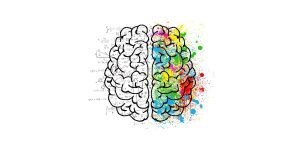The quality of your communication depends on the words you speak and your nonverbal aspect of communication.
We send and receive nonverbal cues and common gestures daily to present and express ourselves.
Nonverbal expression influences how we react, listen, move and look when interacting with others.
Individuals with greater awareness of nonverbal aspects of communication can form deeper connections with others.
In this article, you’ll discover the essence of nonverbal communication and its crucial role in our daily interactions.
We’ll explore how to read body language and enhance your nonverbal communication skills. Moreover, we’ll delve into how understanding your personal strengths, through tools like the HIGH5 test, can significantly boost your nonverbal communication abilities. By aligning your natural talents with effective nonverbal techniques, you’ll be equipped to communicate more authentically and impactfully in both personal and professional settings. Whether you’re a natural empath or a keen observer, this guide will help you leverage your unique strengths to become a master of nonverbal communication.
What is Nonverbal Communication?
Nonverbal communication is about your ability to observe and interpret others’ physical gestures, as well as effectively express yourself through non-verbal cues. It’s the silent flow of information between individuals, often revealing more than words alone. Understanding your unique strengths through assessments like the HIGH5 test can significantly enhance your nonverbal communication skills. For instance, if you discover that ‘Empathy’ is one of your top strengths, you might find that you’re particularly adept at picking up on subtle nonverbal cues from others. This self-awareness can help you leverage your natural abilities to become a more effective communicator in both personal and professional settings.
For example, stuttering, lack of eye contact, and fidgeting may show that this person could be lying. Whether we realize it or not, we all use nonverbal communication constantly.
Your behavior and gesture, such as tone of voice, amount of eye contact, and facial expressions, send information to others. These cues can be subtle or evident and, at times, conflicting.
An individual may say one thing, but their nonverbal cues may imply a different meaning. Such contradictory signals may give you a sign that this person is not speaking the truth.
As nonverbal behaviors are spontaneous and difficult to fake, you can see a person’s genuine feelings from their nonverbal behaviors.
Pro Tip From HIGH5
Leverage your HIGH5 strengths in nonverbal communication. If you’re naturally observant, use this strength to pick up on subtle cues. If you’re empathetic, use this to better understand others’ emotional states through their nonverbal signals. Knowing your strengths can help you become more intentional and effective in your nonverbal communication.
Why is Nonverbal Communication Important?
Nonverbal communication is essential as it provides us with meaningful and sometimes unobvious insight into a social situation.
This information includes how a person feels, how to engage others and how to convey information.
Nonverbal communication common skills allow you to engage and have a basic understanding of people around you. It helps you express your verbal message clearly to avoid any possible misunderstandings.
Nonverbal interpersonal communication is vital in developing meaningful relationships with others. You can show your support and attention to what others are saying.
It also means you are expressing your empathy while others are speaking.
Improving your ability to convey and read nonverbal cues is a vital skill that you take advantage of in any situation. It is an essential skill to help you get what you want and succeed in your career.
Benefits of Effective Nonverbal Communication
List of 8 Benefits
- It reinforces the message you want to convey to others – Nonverbal cues can highlight the critical content of your basic message to others. Using hand gestures to emphasize the significance of your main points may direct others to focus and remember the information.
- It conveys your message effectively to others – You may interact with others by using your nonverbal gestures or behaviors. For example, you may play with your hair with your palm out to show your confidence and comfort to your dating partner.
- It demonstrates your intention – Your nonverbal cues may communicate your present state to others. For example, people may sense that you are nervous through your nonverbal signals. You may have sweaty palms, your voice is trembling, or your leg is shaking while standing up.
- It expresses your emotions – You can use your nonverbal gestures as emotional expressions of frustration, happiness, and more to others.
- It is an excellent way to show your support to others – Small gestures like smiling or leaning forward when someone is talking go a long way in showing that you are interested in them.
- It reflects your personality – Nonverbal communication is an excellent method to express yourself. A friendly and easygoing person, for example, may show an open posture and make steady eye contact with others while smiling.
- It decreases the likelihood of conflicts or misunderstandings occurring – A calm voice, an uncrossed arm, and an open hand gesture might help you diffuse a difficult situation.
- It shows your confidence, enthusiasm, and professionalism – For example, dressing appropriately, standing tall with your shoulders back, and giving a firm handshake can help you appear more confident.
Pro Tip From HIGH5
Align your nonverbal cues with your natural strengths based on HIGH5 test. If you’re a natural ‘Storyteller’, use animated facial expressions and gestures to bring your words to life. If ‘Empathy’ is your strength, focus on maintaining warm eye contact to create a connection with your audience. By doing so, you’ll create a more authentic and impactful communication style.
9 Types of Nonverbal Communication
1. Body language
2. Movement
Consider how you see others based on how they sit, move or stand. The way you walk and conduct yourself conveys a great deal of information to others.
Body movements, such as the speed of you walking, standing, or sitting, may send different meanings to others.
3. Posture
4. Gestures
Gestures are intertwined with our daily lives. Waving or pointing with our hands are gestures we commonly use.
However, the meaning of some gestures is subjective and can vary between cultures.
For example, the “thumb up” sign may mean good or okay in most countries, but it’s regarded as insulting in France.
Hence, it’s critical to be mindful of your gestures in different cultures to prevent misunderstandings.
5. Space
The demand for “personal space” is also a type of nonverbal communication behavior. It is used to convey a range of nonverbal messages.
How close you stand or sit with someone can represent signs of intimacy and love, hostility, or authority.
When having a casual chat with another individual, the personal space distance typically ranges from 18 inches to four feet.
When speaking to a group of individuals, the personal distance tends to be around 10 to 12 feet.
6. Paralanguage
Paralinguistic communication is the science of vocal communication distinct from actual language.
It includes non-language aspects such as pitch, talking speed, intonation, loudness, and inflection. When you talk, people “read” your voice and listen to your words.
Think about the impact that person’s tone of voice might have on the interpretation of a statement. A strong tone of voice may tell the listeners that you have a firm conviction in what you’re saying.
But when you use a hesitant tone of voice, it may imply that you lack confidence and conviction in your message.
7. Facial expressions
Facial expression account for a large amount of our daily nonverbal communication. The expression on someone’s face is usually the first thing we notice before hearing what they say.
You can transmit your feelings to others by using your eyebrows, lips, nose, eyes, and facial muscles.
While some nonverbal communication like gestures may vary across countries, the facial expression of joy, sorrow, anger, and fear are universal.
8. Eye contact
Most of us have a greater inclination to vision; eye contact plays an essential role in communication in humans.
Eye contact may involve eye movements such as gazing, staring, and blinking.
When people meet someone, they are interested in, their blinking rate increases, and their pupils dilate.
People also use eye gaze to judge whether someone is telling the truth. Eye contact is also vital for keeping the discussion flowing and assessing the other person’s attention and reaction.
9. Touch
A lot of our nonverbal communication is also conducted through touch. Touching is sometimes used as a method to express support or comfort.
If you use friendly touches as a form of communication, you should use them selectively and only when the receiver is comfortable. Do not use anger, irritation, or other negative feelings.
How To Read Body Language
Reading body language is a skill that requires dedication and practice to master, but it can be significantly enhanced by understanding your own strengths. The HIGH5 test can reveal strengths like ‘Emotional Intelligence’ or ‘Analyzer’, which can be particularly beneficial in interpreting nonverbal cues. For instance, if ‘Emotional Intelligence’ is one of your top strengths, you might find that you naturally pick up on subtle changes in facial expressions or tone of voice. By recognizing and honing these strengths, you can develop a more nuanced understanding of others’ emotions and intentions, even when they’re not explicitly stated.
Remember, while there are common nonverbal signs, everyone has their personal communication style, and your unique strengths can help you navigate these individual differences more effectively.
You can start learning to read someone’s body language using the techniques below.
1. Posture
When a person’s shoulders are back and sitting upright, that means they are focused and paying attention to you.
You can observe if someone is uncomfortable, restless, or agitated by looking at their body posture. These individuals will usually have their shoulders hunched, and spines bent.
2. Use of arms
Crossing one’s arms when communicating with you can be interpreted as a defensive, protecting posture. It can also mean that the person is nervous or narrow-minded.
However, it may imply the person is confident and comfortable if their arms are crossed but has a relaxed posture.
If a person’s arms are down by their side or showing an open posture, it may indicate that they are optimistic and open to what you are saying.
3. Use of legs
If a person puts both feet firmly on the floor, it indicates that they are prepared and willing to hear you out.
On the contrary, they may feel uncomfortable or disturbed if their legs are crossed or positioned in a closed manner.
Additionally, a person will often point their feet in the direction they desire to go.
4. Use of hands
If you notice someone puts their hands in their pockets or on their head while speaking, it might suggest that they are nervous or deceitful.
Supporting the head with one hand while resting one elbow on the table might imply that they are listening intently to you.
It might indicate that the person is bored if they support their head with both elbows on the table.
5. Pay attention to proximity
Observing how near someone stands or sits to you can ascertain whether they like or dislike you.
Being close to someone can show that you have an intimate relationship with the person.
But if someone moves away as you approach them, it could be a sign that they want to keep a distance from you.
6. Use of facial expressions
If you notice someone with furrowed brows or tight lips, it means that the person might be confused, upset, or experiencing other negative emotions.
You should consider pausing your presentation and checking in with them.
If the person is smiling and has slightly raised eyebrows or relaxed facial muscles, it indicates that they are pleased with what you are sharing.
Pro Tip From HIGH5
Use your HIGH5 strengths as a lens for reading body language. If you’re strong in ‘Emotional Intelligence’, trust your intuition about others’ emotional states. If ‘Analyzer’ is your strength, look for patterns in people’s nonverbal behaviors over time. Your natural talents can provide valuable insights into others’ unspoken communication.
How To Respond To Body Language
Seek clarification
When appropriate, find out the reason behind the nonverbal cues you are observing.
If you see someone with a furrowed brow and are unsure what to make of it, ask the person directly to have a deeper understanding of the comprehension of situations.
If the situation doesn’t allow for that, then you may discuss the meaning of the nonverbal cues.
In short, if you see nonverbal cues that you are not sure of, you can consider modifying your approach and observe if it results in a shift in the person’s behavior.
Communicate clearly and straightforwardly
Make sure the verbal message you communicate is consistent with your nonverbal cues.
Most of the time, when your verbal and nonverbal communication is inconsistent, others will interpret it negatively 90% of the time.
Keep an eye out for misleading nonverbal communications
Unnecessary gestures, phrases, and sounds may divert attention away from you and reduce your communication effectiveness.
You can think about your presentation style. Identify your bad habits and try to eliminate them to improve your communication process.
You can use a video camera to record yourself presenting and identify where you can improve. Or you can get your friend or colleague to observe and provide feedback.
How to Improve Nonverbal Communication
There are a few methods you could follow to improve your nonverbal communication:
1. Do a body language evaluation
Over the course of time, pay attention to how you use body language while interacting with others. Observe your nonverbal cues during meetings, informal conversations, and presentations.
Take note of how others react to your spontaneous nonverbal behaviors.
2. Be intentional about your nonverbal communication
When you are alert and feel confident in your environment, you can try to show positive and open body language.
If you are surprised or concerned, you can use your nonverbal cues to complement your words to deliver your message.
3. Practice makes perfect
Practicing nonverbal communication skills lets you get more acquainted with how you portray yourself. Practice communicating with friends and family.
Then get feedback from them on your body language.
You can also rehearse delivering a presentation to observe how you use body language and other nonverbal cues to complement your message.
This method also allows you to notice any areas that require improvement.
4. Observe others
Observing how others use nonverbal cues can help you figure out what is effective and what to avoid. You can start by observing someone you admire or believe is a great communicator.
Watch how they use their body, emotional tone, and facial expressions when talking. Then, consider adding these nonverbal cues into your communication style.
5. When in doubt, mirror the other person
If in doubt, mirror the other person. Mirroring the person’s body language you are speaking to is a simple technique for practicing appropriate communication skills.
If you notice the other person sitting with a crossed leg, you should try to copy and do the same. Mirroring someone’s nonverbal cues can help to build mutual trust and confidence.
Pro Tip From HIGH5
Conduct regular ‘nonverbal check-ins’ with yourself. Set aside time each week to reflect on your nonverbal communication in different situations. Consider how your strengths manifested in your body language, tone of voice, and facial expressions. This practice will help you become more intentional in your nonverbal communication and allow you to leverage your HIGH5 strengths more effectively.
Verbal Vs. Nonverbal Communication Skills
Verbal Communication
- Verbal communication uses language, words, statements, and voice
- Verbal communication is a sequential and intentional kind of communication. First, you decide what you want to say. Then you organize your thoughts, construct them into sentences and then convey your message. It is a carefully structured process where the speaker delivers their information clearly
- Verbal communication is a conscious procedure. It requires you to think, digest, and put your thinking into words
- Verbal communication is simple and easy to understand if you know the language and the speaker’s message. You can grasp what the speaker is saying if you listen attentively
Nonverbal Communication
- Nonverbal communication uses nonverbal cues such as gestures, body language, facial expressions, postures, etc
- Nonverbal communication is usually spontaneous and not pre-planned. It relies more on how you use your nonverbal behaviors to respond to external events. However, you can improve your nonverbal communication to use it more intentionally
- Nonverbal communication is an unconscious process. You don’t need to think deliberately to show verbal cues. It’s spontaneous and dependent on the emotion you are feeling at the moment
- Nonverbal communication is more difficult to decipher than verbal communication. To understand what the other person is attempting to explain or communicate, you need to observe their nonverbal cues. This includes their tone, body language, facial expressions, and posture
Bonus: Nonverbal Communication Skills and Examples
Perhaps the most crucial life skill you need to master is communication skills. It is a skill that allows us to communicate with others and understand what is spoken to us.
Communication skills also allow us to develop meaningful and strong relationships with others.
Communication is the process of conveying information from one point to another. It can be delivered verbally, nonverbally, visually, or written.
However, we generally use verbal and nonverbal cues (body language, facial expressions, gestures, etc.) for most of our day-to-day communication.
How can I figure out if I possess communication strengths?
Various exams or language comprehension tasks might help you determine your communication abilities.
The free HIGH5 strengths test is one of the tests you consider taking. The HIGH5 strengths report will help you identify your top five strengths and how to leverage them to reach your full potential.
You will also acquire practical insights to help you further grow yourself.
Not only that, but by identifying your strengths, you can learn how to enhance your communication skills, build relationships, and advance your career.
Frequently Asked Questions About Nonverbal Communication
What are five positive nonverbal characteristics?
Five positive nonverbal features are:
- Smiling
- Paying attention to body language
- The upbeat tone of voice
- Open body posture
- Maintaining proper eye contact
Which is the best example of nonverbal communication?
Some examples of good nonverbal communication are:
- Dressing appropriately for the situation
- Standing or sitting with good posture
- Using touch properly to display kindness or professionalism
- Respecting other people’s personal space
What are the four main types of non-verbal communication?
The four main types of nonverbal communication are:
- Body language
- Facial expression
- Paralanguage
- Eye contact








